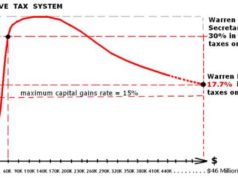
FEDERAL FORMS
FORM 1040, IRS Form Individual Income Tax Return
FORM 1040A, IRS Form Individual Income Tax Return
FORM 1040X, IRS Form Amended U.S. Individual Income Tax Return
FORM 1040EZ, IRS Form Income Tax Return for Single and Joint Filers with No Dependents
FORM 1041, IRS Form Income Tax Return for Estates and Trusts
FORM 1041, IRS Form Instructions
FORM 1041 ES, IRS Form Estimated Income Tax for Estates and Trust
FORM 1065, IRS Form Return of Partnership Income
FORM 1099, IRS Form Miscellaneous Income
FORM W-2, IRS Form Wage and Tax Statement
FORM 1120, IRS Form Corporation Income Tax Return
FORM 1120, IRS Form Instructions
FORM 1120S, IRS Form S-Corporation Income Tax Return
FORM 4506-T, IRS Form Request for Transcript of Tax Return
STATE INCOME REFUND FORMS
Alabama Tax Return (Indi 1. 2. 3. Corp 1. 2.)
Alaska Tax Return (Corporate 1.)
Arizona
Tax Return (Indi 1. 2. Corp 1. 2.)
Arkansas
Tax Return (Indi 1. 2. 3. 4. Corp 1. 2.)
California
Tax Return (Indi 1. 2. 3. 4. Corp 1. 2. 3.)
Colorado
Tax Return (Indi 1. Corp 1. 2.)
Connecticut
Tax Return (Indi 1. 2. 3. 4. Corp 1. 2.)
Delaware
Tax Return (Indi 1. 2. Corp 1. 2. 3.)
Florida
Tax Return (Corporate 1. 2. 3.)
Georgia
Tax Return (Indi 1. 2. 3. Corp 1. 2. 3.)
Hawaii
Tax Return (Indi 1. 2. 3. Corp 1.)
Idaho
Illinois
Tax Return (Indi 1. 2. Corp 1. 2.)
Indiana
Iowa
Tax Return (Indi 1. Copr 1. 2.)
Kansas
Kentucky
Tax Return (Indi 1. 2. 3. 4. Corp 1. 2.)
Louisiana
Tax Return (Indi 1. 2. 3. Corp 1.)
Maine
Maryland
Tax Return (Indi 1. 2. 3. Corp 1. 2.)
Massachusetts
Tax Return (Indi 1. 2. Corp 1. 2. 3.)
Michigan
Tax Return (Indi 1. 2. Corp 1. 2.)
Minnesota
Tax Return (Indi 1. 2. 3. 4. Corp 1. 2. 3.)
Mississippi
Missouri
Tax Return (Indi 1. 2. Corp 1. 2.)
Montana
Tax Return (Indi 1. 2. 3. 4. Corp 1. 2.)
Nebraska
Tax Return (Indi 1. 2. Corp 1. 2.)
New Hampshire
Tax Return (Indi 1. Corp 1. 2.)
New Jersey
Tax Return (Indi 1. 2. Corp 1. 2.)
New Mexico
Tax Return (Indi 1. 2. 3. Corp 1. 2.)
New York
Tax Return (Indi 1. 2. Corp 1. 2. 3.)
North Carolina
Tax Return (Indi 1. 2. Corp 1. 2.)
North Dakota
Ohio
Tax Return (Indi 1. 2. 3. Corp 1.)
Oklahoma
Tax Return (Indi 1. 2. Corp 1.)
Oregon
Tax Return (Indi 1. 2. 3. Corp 1. 2. 3.)
Pennsylvania
Tax Return (Income Tax Return)
Rhode Island
Tax Return (Indi 1. 2. Corp 1. 2.)
South Carolina
Tax Return (Indi 1. 2. Corp 1. 2. Inst)
South Dakota
Tennessee
Tax Return (Indi 1. Corp 1. 2.)
Utah
Tax Return (Indi 1. Corp 1. 2.)
Vermont
Tax Return (Indi 1. Corp 1. 2.)
Virginia Forms (Indi 1. 2. 3. 4. Corp. 1. 2. 3.)
Washington
West Virginia
Tax Return (Indi 1. 2. 3. 4. Corp 1.)
Wisconsin
Tax Return (Indi 1. 2. 3. 4. Corp 1. 2. 3. 4. 5.)
What is an Income Tax Refund?
An income tax refund is a refund awarded to individuals businesses who file their taxes with the Internal Revenue Service of the United States Federal Government. A tax refund, also known as a tax rebate, is awarded to a taxpayer when their specific filing’s tax liability is less than the taxes paid. The Income Tax Refund is the primary refund that an individual taxpayer will receive; the income Tax Refund is so prevalent because the majority of individual workers in the United States possess a greater amount in withholding taxes than the taxes owed.
The Income Tax Refund is derived based off an individual’s work and the subsequent income received from employment. Every pay cycle an individual employee will notice that his or her income is reduced due to withholding taxes. This form of taxation is a part of the income tax; the Federal Government of the United States takes a percentage out of every employee’s paycheck each pay cycle to fund public expenditures.
The withholding tax, in essence is like a short term loan, because the amount withheld typically exceeds the total taxes owed by the individual. This relationship is then balanced through the delivery of the income tax refund; the individual taxpayer for satisfying their particular withholding taxes will receive a check from the Treasury Department to makeup the excess of withholding taxes versus the actual amount owed.
According to the Internal Revenue Service, nearly 80% of tax returns receive a refund check. The Income Tax Refund is either awarded via a direct deposit, where the money is directly deposited into the individual’s bank account, or is sent via a paper check to the recipient’s address by the Internal Revenue Service.
The individual income tax refund is filed on Form 1040. The Form 1040, which acts as the U.S. Individual Tax Return is a 2 page form that acts as the medium for processing the individual’s tax return. The first section of the Income Tax Return form will ask the taxpayer for their filing status; the taxpayer may file jointly (with a spouse), as an individual, or as a married couple but filing separately. Additionally, the individual will be asked to list any exemptions and any dependents (children or otherwise) that are attached to the tax filing.
Following this section the taxpayer will be asked to list all forms of received income during the fiscal year, including their salary, any dividends received, social security benefits, business income, capital gains or losses, income derived from real estate, alimony, unemployment compensation etc. When all the income is computed the taxpayer will add-up their total income. After this is satisfied, the individual must compute their total Adjusted Gross Income. This figure is calculated by elucidating upon all educator expenses, moving expenses, penalties for early withdrawals, IRA deductions, student loan interest deductions, etc.
Following this step the individual will list (all of the categories are established on the form) all pertinent refunds, payments, taxes and credits that are required on the form. If your total payments exceed your total taxes, the federal government will reimburse you for the overpaid taxes.


























